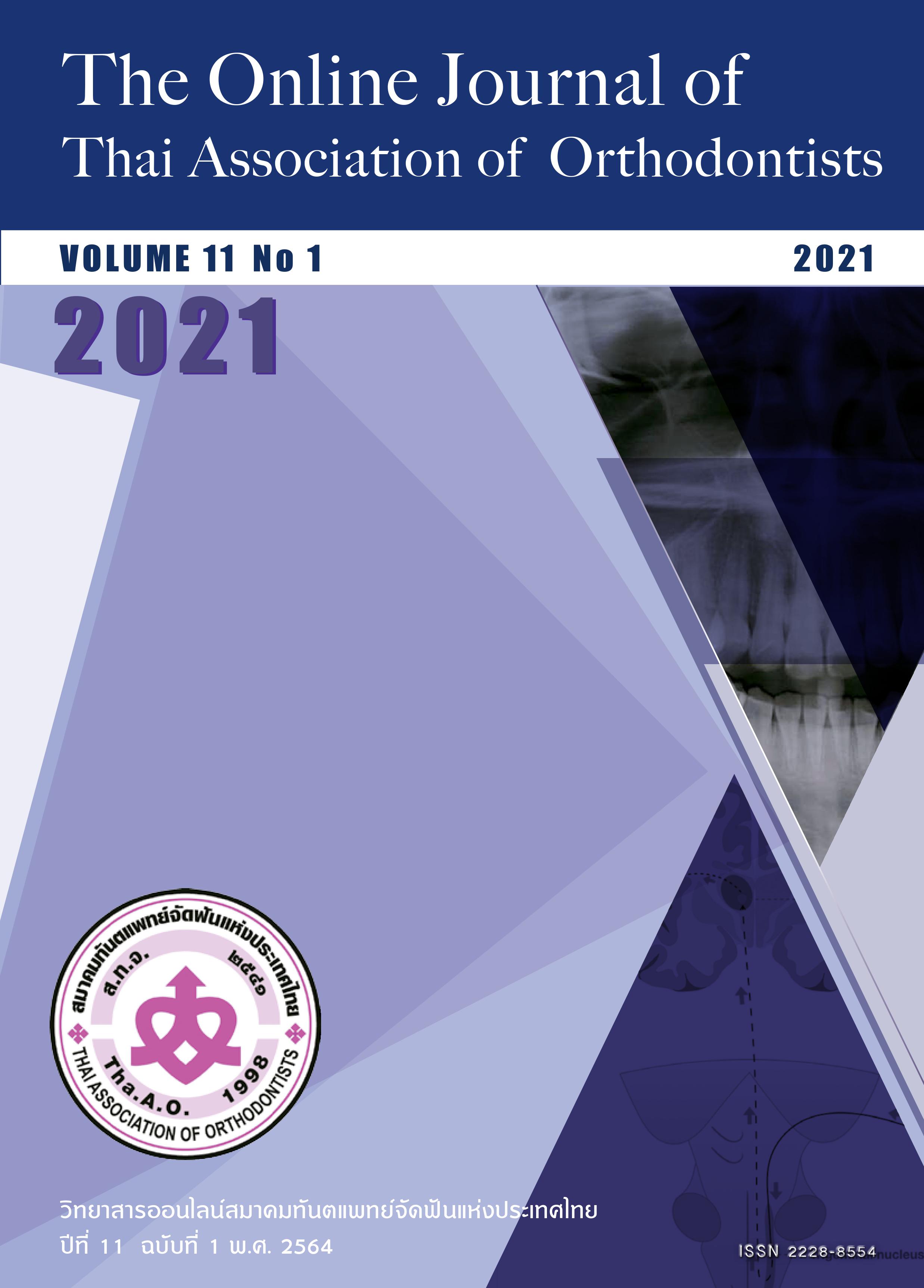Contemporary Interest in Orthodontic Pain -
Main Article Content
Abstract
Orthodontic pain is an usual negative effect caused by orthodontic treatment. Orthodontic force applied on teeth initially induced vascular occlusion and ischemia followed by a cascade of inflammatory reactions including changes of vascular, cellular and chemical components. These events act in an orchestrated way to finally outcome in orthodontic pain and tooth movement. Orthodontic tooth movement stimulates periodontal sensory nerve endings, which transmit orthodontic pain signal through the trigeminal neuron at the trigeminal ganglia, the trigeminal nucleus caudalis at the medulla oblongata and the ventroposterior nucleus at the thalamus subsequently, finally the signal reaches the sensory cortex for pain perception and emotional experience.
To date, there are several therapeutic modalities to relieve orthodontic pain such as pharmacological, mechanical and behavioural approaches, including low-level laser therapy. However, further research is needed to clarify the effectiveness and side effect of these modalities. Moreover, gene therapy is a new approach that has been gaining interest for relieving orthodontic pain in the future.
Article Details

This work is licensed under a Creative Commons Attribution-NonCommercial-NoDerivatives 4.0 International License.


